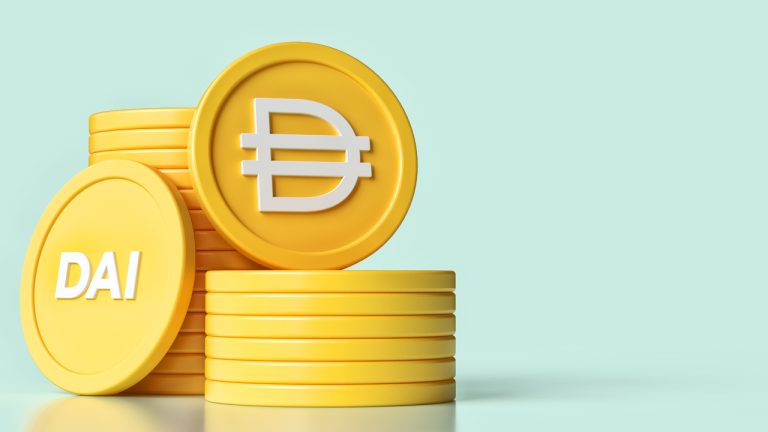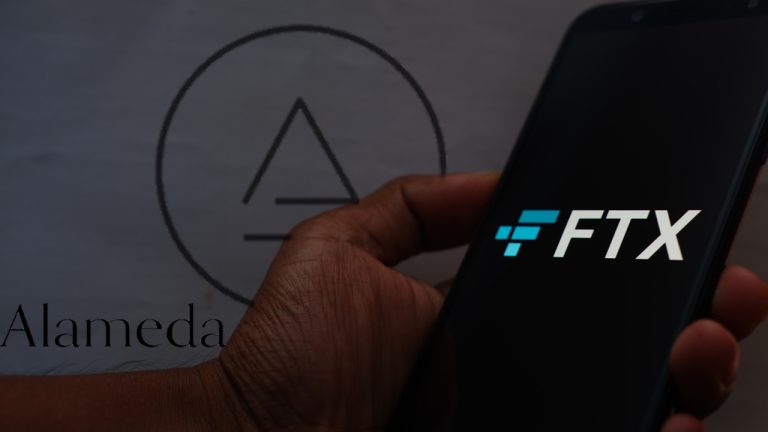 The Central Bank of Nigeria has barred the use of foreign exchange as collateral for local currency loans. In its April 8 letter addressed to banks, the CBN warned of severe consequences for banks that fail to comply with the latest directive. Halting the Slide of the Naira Hamstrung by ongoing shortages of U.S. dollars, […]
The Central Bank of Nigeria has barred the use of foreign exchange as collateral for local currency loans. In its April 8 letter addressed to banks, the CBN warned of severe consequences for banks that fail to comply with the latest directive. Halting the Slide of the Naira Hamstrung by ongoing shortages of U.S. dollars, […]
MakerDAO’s Rune Christensen says appropriate regulation will see stablecoins become mainstream, but the real opportunity is in decentralized stablecoins.
Decentralized stablecoins may eventually dominate the stablecoin market, so long as crypto “ends up living up to its potential,” says Rune Christensen, the co-founder of DeFi pioneer MakerDAO.
Speaking to Cointelegraph’s Andrew Fenton at Token 2049 in Singapore, Christensen aired his thoughts on the future of decentralized stablecoins such as Dai (DAI) and their role in the wider crypto economy.
They discussed a presentation by Castle Island Ventures partner Nic Carter at the TOKEN2049 conference in Singapore in which he said that interest-bearing stablecoins could become 30% of the market within two years.
Christensen agreed but said it would probably depend on the macro situation, adding “if high inflation high rates continue, then probably,” stablecoin dominance will increase.

When asked whether a decentralized stablecoin could compete with its centralized cousins, he replied:
“Easily I mean, I think if the space ends up living up to its potential, then decentralized stablecoins will be the entire market like centralized stablecoins would be the edges that connect us to like the legacy system.”
He added that if crypto “delivers” and becomes regulated, centralized stablecoins will become more mainstream. However, the real potential is in decentralized stablecoins, he suggested:
“I think the real killer advantage of decentralized stablecoins, run by actual data like Maker, is this ability to gamify your savings.”
Related: MakerDAO publishes 5-phase roadmap featuring funding for open-source AI projects
In mid-2022, Christiansen proposed MakerDAO’s “Endgame Plan”. The plan proposes making DAI a free-floating asset, initially collateralized by real-world assets (RWA).
There will be a three-year period when DAI remains pegged to the dollar. During this period, the protocol will double down on RWA to accumulate as much Ether (ETH) as possible which increases the ratio of decentralized collateral.

Rune believes that Maker has built a very solid and stable foundation but it has been overtaken by scammy and illegitimate projects.
He wants to try and gamify to make the protocol fun and more appealing to younger users. “It's what people want,” he said before adding, “Things are designed like a game and that's the kind of interface they will use.”

Magazine: Web3 Gamer: GTA owner joins Web3, Bitcoin casino, Sunflower Land review

The stablecoins with the largest market cap are pegged to the U.S. dollar, so what risk does de-dollarization pose to stablecoin users?
It is an empirical fact that the United States dollar is continuing to lose its dominant role as the global reserve currency, but what might happen to the stablecoin market should it be superseded?
According to data from the International Monetary Fund, the U.S. dollar now accounts for just over 58% of global foreign exchange reserves, a considerable decrease from the 71% share it had in 2001.

Jeremy Allaire — the CEO of USD Coin (USDC) issuer Circle — highlighted this shift at the April 26 Consensus 2023 conference, arguing that the U.S. must implement stablecoin legislation and digitize the U.S. dollar to remain competitive amid the “very active de-dollarization taking place.”
De-dollarization refers to the process of reducing the use of the U.S. dollar in a country’s economy, and powerhouses like Russia and China are actively pursuing de-dollarization as they look to replace the U.S. dollar with digital assets, other fiat currencies, and potentially a BRICS currency between Brazil, Russia, India, China and South Africa.
As an example of this de-dollarization taking place, the Chinese yuan has recently overtaken the U.S. dollar as China’s most used cross-border currency according to Bloomberg, increasing to a high of 48% of transactions after it made up nearly 0% in 2010.
Chinese Yuan overtakes US dollar as most-used currency in China's cross-border transactions for the first time in history.
— Genevieve Roch-Decter, CFA (@GRDecter) April 26, 2023
Yuan-share rose to a record high of 48%, UP from nearly zero in 2010.
U.S-share declined to 47%, DOWN from 83% over the same period.
Wow. pic.twitter.com/Lm3Rygpm45
Another example that may be more familiar to crypto users can be seen in El Salvador, which in 2021 became the first country in the world to use Bitcoin (BTC) as a legal tender.
Following news that crypto exchange Coinbase is launching a derivatives exchange in Bermuda, some crypto proponents such as venture capitalist David Sacks have even suggested that the U.S. may be attempting to prevent crypto firms from accessing bank services in the country in an intentional effort to drive them overseas out of fear that crypto could further eat into the dominance of the U.S. dollar.
Speaking to Cointelegraph, Dr. Joachim Schwerin — principal economist for the European Commission — suggested changes in the world’s leading reserve currency regularly occur, adding:
“Since we have records on financial data, the role of globally leading currency has changed every 80 to 110 years. Times of accelerated global frictions that significantly affect trade patterns vastly accelerate such changes.”
The sanctions placed on Russia by the U.S. are a prime example of this global friction, and on April 16 Treasury Secretary Janet Yellen noted that sanctions could risk the U.S. dollar hegemony as targeted countries look for alternative currencies.
Many people are likely familiar with the video “Principles for Dealing with the Changing World Order’ by billionaire investor and hedge fund manager Ray Dalio, in which Dalio suggested that having the leading reserve currency “is a key factor in a country becoming the richest and most powerful empire,” which is an opinion shared by many pundits.
The US used its advantage of US dollar hegemony to build an aggressive military to bully the whole world.
— Richard (@ricwe123) April 18, 2023
De-dollarization will cause the US dollar to collapse, exactly similar to what happens when Ponzi schemes collapse. pic.twitter.com/GALHzBj0AI
One of the main benefits of being the dominant reserve currency is thought to be the increased level of demand it experiences relative to other countries due to it being widely accepted globally and regarded as a safe-haven asset, thus making it more valuable.
In response to questions from Cointelegraph, Tether — the issuer of the largest stablecoin by market capitalization Tether (USDT) — noted that stablecoins which are pegged to the U.S. dollar also increase demand for the currency.
Increased demand for the U.S. dollar theoretically makes it more valuable relative to other currencies, which makes importing goods and services relatively cheaper for the U.S. and allows the country to borrow funds at lower costs.
Yet in response to concerns about what would occur if the U.S. dollar lost its hegemony, many economists cite the words of Nobel Prize-winning economist Paul Krugman, who argued back in August 2015 that “while reserve-currency status may have political symbolism attached, it's essentially irrelevant as an economic goal” due to its benefits being worth “a small fraction of one percent of GDP.”
It is worth noting that economists are famous for disagreeing with one another. In an April 11 survey of economists, 50% of them disagreed with Krugman’s assertion that the benefits are only minor.
According to CoinMarketCap, every stablecoin with a market cap exceeding $1 billion is pegged to the U.S. dollar, which makes sense given its dominant status.
As the U.S. dollar continues to lose its dominance, however, these stablecoins may see their usage diminish.
Tether highlighted that stablecoins are “particularly beneficial for citizens in emerging markets who may face high levels of inflation and currency instability,” or those in countries with limited access to financial services, so even if the U.S. dollar and stablecoins pegged to it diminish, others will likely step in.
Schwerin noted that “big issues are already now reaching out outside the U.S. to cater for exactly this scenario,” referencing stablecoins like Circle’s Euro Coin (EUROC) which is pegged to the euro, adding:
“There will have to be quite a lot of improvisation and experimentation, which is good for innovation.”
Schwerin noted that he didn’t know exactly what would work, but expressed optimism that the crypto community would be able to quickly find solutions.
Tether said that it “has always been at the forefront of innovation,” and pointed to other products it has released such as Tether Gold (XAUT) — a stablecoin collateralized by gold — as well as other fiat-backed stablecoins.
While stablecoins can be designed in very different ways, the most frequently used ones are currently both fully/over-collateralized and exogenous (backed by external assets).
As long as stablecoins have sufficient collateral, their users should not be worried that a transition away from U.S. pegged stablecoins will cause any liquidity issues, particularly when a high proportion of the collateral is stored as highly liquid assets.
Magazine: Here’s how Ethereum’s ZK-rollups can become interoperable

Circle’s earlier disclosure that $3.3 billion worth of USDC reserves were held with Silicon Valley Bank resulted in it losing market share to its competitor USDT.
Circle CEO and co-founder Jeremy Allaire says that since March 13, the stablecoin issuer has been “able to access” its $3.3 billion of funds held with the collapsed bank, Silicon Valley Bank.
Speaking with Bloomberg Markets on March 14, Allaire said that he believed that “if not everything, very close to everything was able to clear” from the failed lender.
USD Coin (USDC) — the stablecoin issued by Circle — briefly de-pegged following news that $3.3 billion of its cash reserves were stuck on SVB.
The stablecoin’s dollar peg has since recovered, but mass redemptions of USDC have resulted in the market cap of the stablecoin dropping by nearly 10% since March 11, according to TradingView.

Meanwhile, throughout the same timeframe, USDC peer Tether (USDT) has recorded a slight increase in its market cap since March 11, climbing by over 1% to $73.03 billion.
Related: USDC depegged because of Silicon Valley Bank, but it's not going to default
The temporarily locked funds had a significant effect on USDC, even though the $3.3 billion represented less than 8% of the token’s reserves, according to its January reserve report released on March 2.
Can never be sure in crypto but, it looks to be ok.
— tedtalksmacro (@tedtalksmacro) March 11, 2023
8.25% of Circle’s reserves are stuck… leaving 91.75% of their funds liquid. Even in the case that funds are totally lost, Coinbase will step in to sure up #USDC
Market reaction seems to be just total panic led by recency… https://t.co/vs1junbFys
The report asserted USDC was over 100% collateralized with over 80% of the reserve consisting of short-dated United States Treasury Bills — highly liquid assets thatare direct obligations of the U.S. government and considered one of the safest investments globally.
 On March 11, 2023, the decentralized finance project Makerdao issued an emergency proposal following the USDC depegging incident that saw the stablecoin dip down to $0.877 per unit. At the time of writing, Makerdao commands $3.1 billion in USDC collateral that backs a portion of the project’s stablecoin, DAI. Makerdao Proposes Changes to Limit Exposure […]
On March 11, 2023, the decentralized finance project Makerdao issued an emergency proposal following the USDC depegging incident that saw the stablecoin dip down to $0.877 per unit. At the time of writing, Makerdao commands $3.1 billion in USDC collateral that backs a portion of the project’s stablecoin, DAI. Makerdao Proposes Changes to Limit Exposure […]
The vote was passed to fully collateralize Frax Finance's native stablecoin, thus phasing out its algorithmic backing.
The community of decentralized finance stablecoin protocol Frax Finance has voted to fully collateralize its native stablecoin Frax (FRAX), marking an end to the algorithmic backing of the protocol.
The FIP-188 governance proposal initially posted on Feb. 15 reached a quorum following a 98% vote in favor, according to a snapshot on Feb. 23 — which would change the collateralization model of FRAX.
“The time has come for Frax to gradually remove the algorithmic backing of the protocol,” last week’s proposal read.
Near unanimous vote to move $frax to 100% CR over time.
— 0xChaos (@0xCha0s) February 23, 2023
Seems like @fraxfinance serious about making it clear it’s a stable worth holding with no incentive and completely backed with exogenous collateral.
Will be interesting to see it scale$fxs https://t.co/fSQXpmsge3
It explained that the original protocol included a “variable collateral ratio” which adjusted based on the market demand of the stablecoin. The market would dictate how much collateral was required for each FRAX to equal one United States dollar.
The hybrid model resulted in the stablecoin being 80% backed by crypto asset collateral and partially stabilized algorithmically. This was achieved by the minting and burning of its governance token, FXS, which has surged 12% over the past 12 hours.
Frax is the industry’s fifth-largest stablecoin with a market capitalization of just over $1 billion.
Following the implementation of the proposal, the protocol will not mint any more FXS to increase the collateral ratio and token supply.
“To be clear, this proposal does not rely on minting any FXS to achieve the 100% CR.”
It plans to retain protocol revenue to fund the increased collateral ratio, which includes pausing FXS buybacks.
Related: SEC enforcement against Kraken opens doors for Lido, Frax and Rocket Pool
It will also authorize up to $3 million per month in Frax Ether (frxETH) purchases to increase the collateral ratio. frxETH behaves similarly to a stablecoin but is pegged to Ether (ETH) instead. It facilitates the transfer of Ether liquidity within the Frax ecosystem.
DeFiLlama recently reported on the growth of frxETH over the past month.
FraxETH grew by 46.33% over the past month and now has over 100k ETH tokens locked pic.twitter.com/5NxhKnTHUt
— DefiLlama.com (@DefiLlama) February 20, 2023
The move comes amid what appears to be a wider crackdown on stablecoins in the wake of last year’s catastrophic Terra/Luna collapse.
On Feb. 22, the Canadian Securities Administrators (CSA) published a long list of new requirements for crypto companies and stablecoin issuers wanting to remain legally compliant in the country.
Included on that list were strict rules for stablecoin trading and a prohibition on algorithmic or non-fiat-backed stablecoins.
 According to Lynette Zang, chief market analyst at ITM Trading, U.S. banks have the legal authority to confiscate people’s funds due to legislation passed by Congress. In a recent interview, Zang discussed how the purchasing power of the U.S. dollar has dwindled to “roughly three cents,” her belief that central bank digital currencies (CBDCs) will […]
According to Lynette Zang, chief market analyst at ITM Trading, U.S. banks have the legal authority to confiscate people’s funds due to legislation passed by Congress. In a recent interview, Zang discussed how the purchasing power of the U.S. dollar has dwindled to “roughly three cents,” her belief that central bank digital currencies (CBDCs) will […]
After a bullish 2021 crypto miners sought out loans to allow them to expand, a move which has since backfired following difficult market conditions in 2022.
The holding company for the crypto-friendly bank, BankProv, has revealed it’s no longer providing loans secured by cryptocurrency mining rigs after writing off $47.9 million in loans primarily secured by them throughout 2022.
According to a Jan. 31 filing with the United States Securities and Exchange Commission (SEC), BankProv has already nearly halved the proportion of its digital asset portfolio consisting of rig-collateralized debt since the quarter ending Sep. 30, 2022.
The bank held $41.2 million in digital asset-related loans as of Dec. 30 last year consisting of $26.7 million worth of loans collateralized by crypto mining rigs which “will continue to decline as the Bank is no longer originating this type of loan”.
The crypto mining industry has taken on huge amounts of debt during the 2021 bull market, often offering up mining rigs they own as collateral in order to lower their interest rates.

The subsequent bear market starting in 2022 resulted in tough conditions for miners, however, and many were forced to sell the Bitcoin (BTC) mining rigs they own in order to cover operating costs, causing mining hardware prices to plummet.
Related: Bitcoin miner Greenidge cuts NYDIG debt from $72M to $17M
Despite the falling prices, some banks who had issued mining rig-collateralized debt were forced to repossess some of the miners used as collateral.
According to a previous SEC filing, BankProv repossessed mining rigs in exchange for the forgiveness of $27.4 million in loans on Sep. 30, 2022, which resulted in an $11.3 million write-off for the firm.
The losses likely contributed heavily to its decision to stop issuing these types of loans, with Carol Houle, the CFO of its holding company Provident Bancorp, noting:
“As we reflect on 2022, we are eager to take its lessons and emerge a better, stronger bank. Despite our 2022 losses, we enter 2023 well capitalized and well diversified.”
 On Jan. 17, 2023, FTX Trading Ltd. and affiliated debtors updated the public and detailed that the firm’s current administrators have discovered $5.5 billion of liquid assets to date. Top-level executives, including the new FTX CEO and chief restructuring officer, John J. Ray III, met with the bankruptcy case’s committee of unsecured creditors to share […]
On Jan. 17, 2023, FTX Trading Ltd. and affiliated debtors updated the public and detailed that the firm’s current administrators have discovered $5.5 billion of liquid assets to date. Top-level executives, including the new FTX CEO and chief restructuring officer, John J. Ray III, met with the bankruptcy case’s committee of unsecured creditors to share […] The largest crypto-asset exchange by global trade volume, Binance, announced that its custody business has launched an off-exchange settlement solution for institutional clients. With this solution, institutions can lock a specified amount of crypto with a qualified cold storage wallet, and assets will be mirrored on their Binance exchange account with a 1:1 balance. Binance […]
The largest crypto-asset exchange by global trade volume, Binance, announced that its custody business has launched an off-exchange settlement solution for institutional clients. With this solution, institutions can lock a specified amount of crypto with a qualified cold storage wallet, and assets will be mirrored on their Binance exchange account with a 1:1 balance. Binance […]